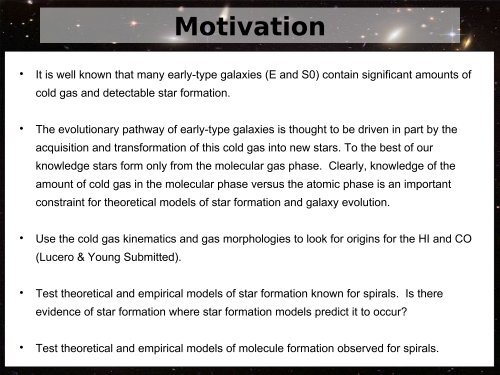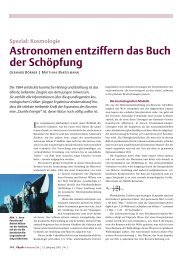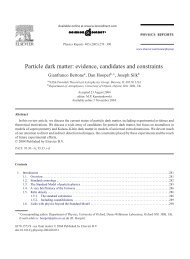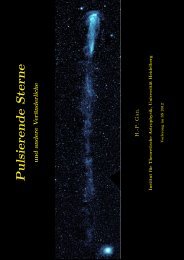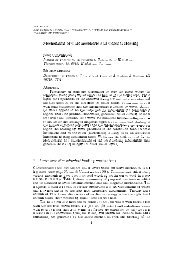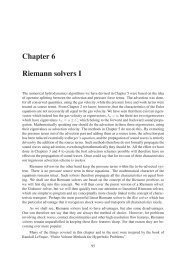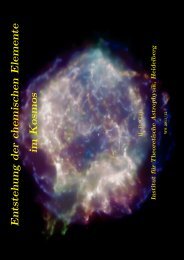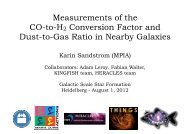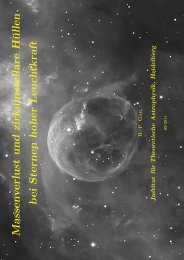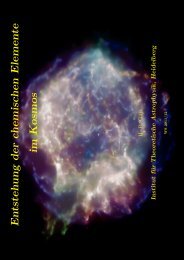The HI-H 2 Transition and Star Formation in Early-Type Galaxies
The HI-H 2 Transition and Star Formation in Early-Type Galaxies
The HI-H 2 Transition and Star Formation in Early-Type Galaxies
Create successful ePaper yourself
Turn your PDF publications into a flip-book with our unique Google optimized e-Paper software.
Motivation<br />
<br />
It is well known that many early-type galaxies (E <strong>and</strong> S0) conta<strong>in</strong> significant amounts of<br />
cold gas <strong>and</strong> detectable star formation.<br />
<br />
<strong>The</strong> evolutionary pathway of early-type galaxies is thought to be driven <strong>in</strong> part by the<br />
acquisition <strong>and</strong> transformation of this cold gas <strong>in</strong>to new stars. To the best of our<br />
knowledge stars form only from the molecular gas phase. Clearly, knowledge of the<br />
amount of cold gas <strong>in</strong> the molecular phase versus the atomic phase is an important<br />
constra<strong>in</strong>t for theoretical models of star formation <strong>and</strong> galaxy evolution.<br />
<br />
Use the cold gas k<strong>in</strong>ematics <strong>and</strong> gas morphologies to look for orig<strong>in</strong>s for the <strong>HI</strong> <strong>and</strong> CO<br />
(Lucero & Young Submitted).<br />
<br />
Test theoretical <strong>and</strong> empirical models of star formation known for spirals. Is there<br />
evidence of star formation where star formation models predict it to occur?<br />
<br />
Test theoretical <strong>and</strong> empirical models of molecule formation observed for spirals.<br />
3


